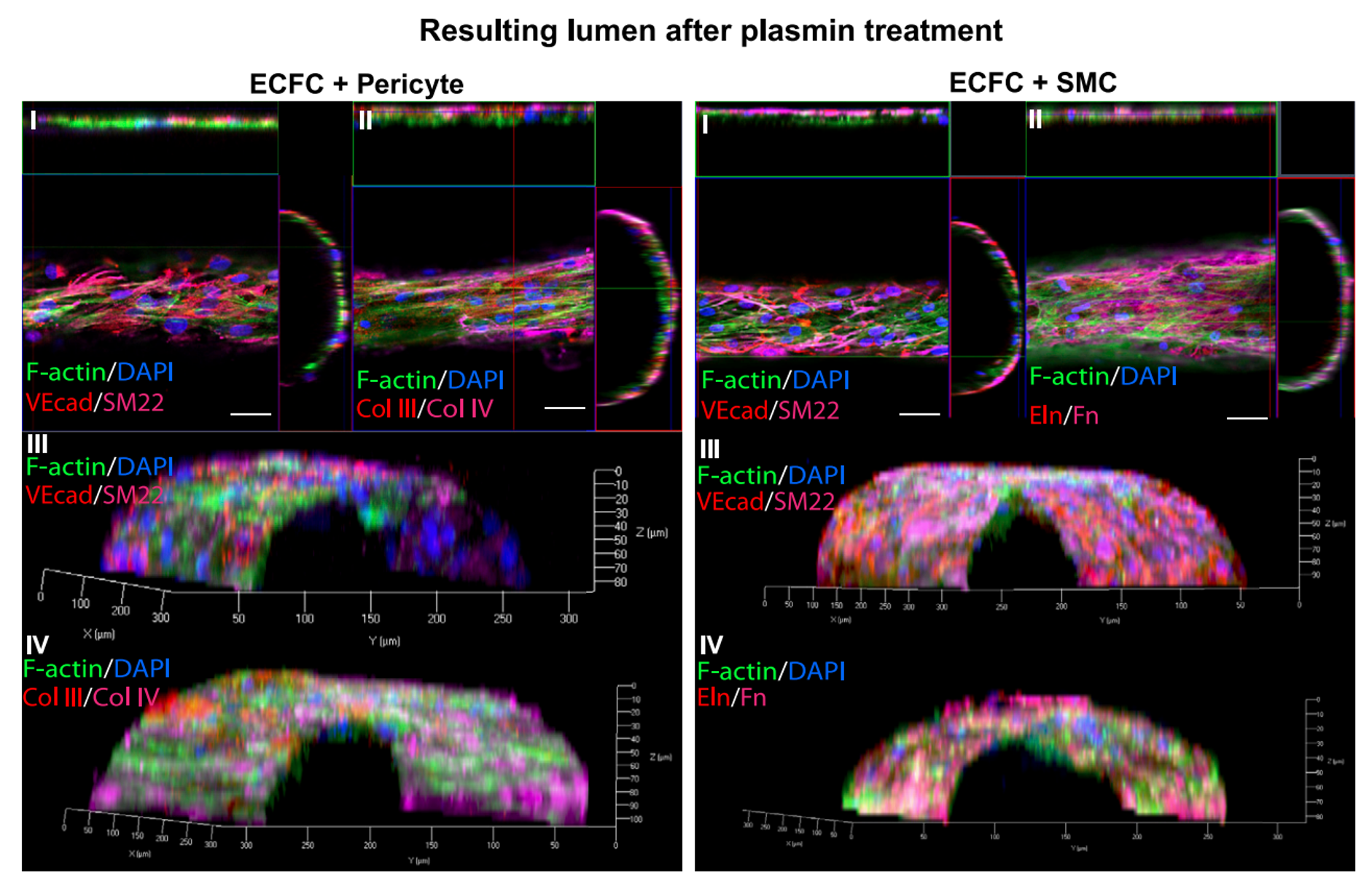
Most studies on engineered vasculature focus on either capillary/microvasculature bed formation or large (>3 mm) vessel reconstruction. This is mainly due to the challenge of generating stable and robust tubular structures between 1-3mm in diameter.
We established fibrin hydrogel microfibers made by a modified electrospinning technique as suitable candidates for guiding the sequential engineering of small vasculature, starting with the innermost layers. Endothelial seeded on these 3D fibrin microfibers were shown to follow the microfiber alignment, forming an organized endothelial monolayer. Remarkably, endothelial deposited ECM followed a circumferential organization around the microfibers. We introduced pericytes or SMCs on top of the endothelial monolayer to build multicellular microvascular structures. The resulting structures contain an endothelial monolayer with an ellipsoidal morphology and a fully invested perivascular multicellular layer expressing specific markers and ECM proteins (1). Building on these studies, we recently delineated the therapeutic impact of these grafts. We fabricated luminal structures, and following interposition transplantation, we found that the graft mediates neotissue formation and incorporation into the native tissue and matches the native vessel size and mechanical properties (2).
Our unique mimetic approach enables the creation of small vascular structures, providing the basis for studies of endothelial-perivascular interaction in disease and regenerative processes and providing a prospect for developing robust and regenerative arterial conduits as therapeutics.
- Barreto-Ortiz SF, et al. Fabrication of 3D multicellular microvascular structures. FASEB J. 2015; 29:3302-3314.
- Elliott MB, et al. Regenerative and Durable Small-Diameter Graft as an Arterial Conduit. Proc Natl Acad Sci U S A. 2019;116:12710-12719.